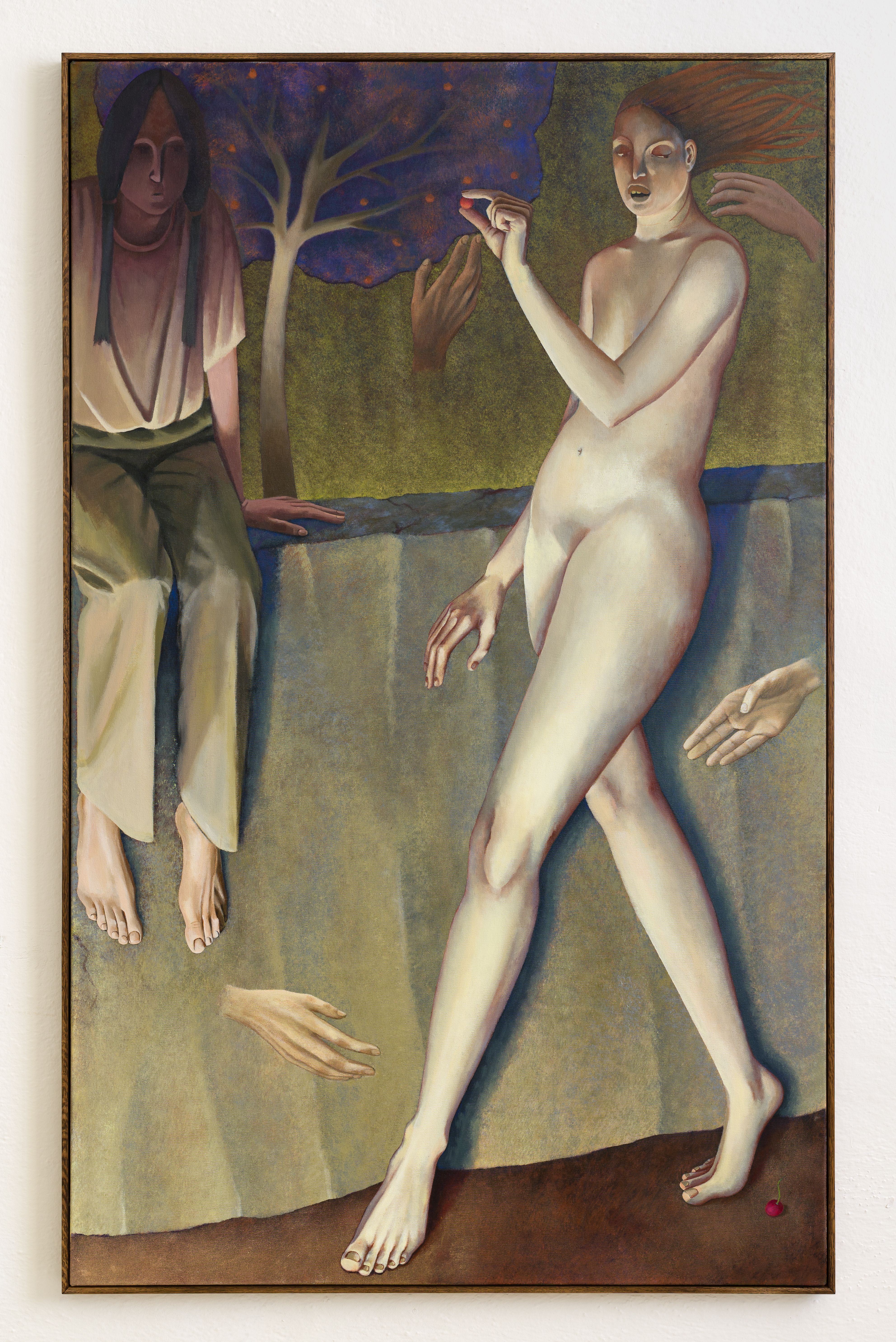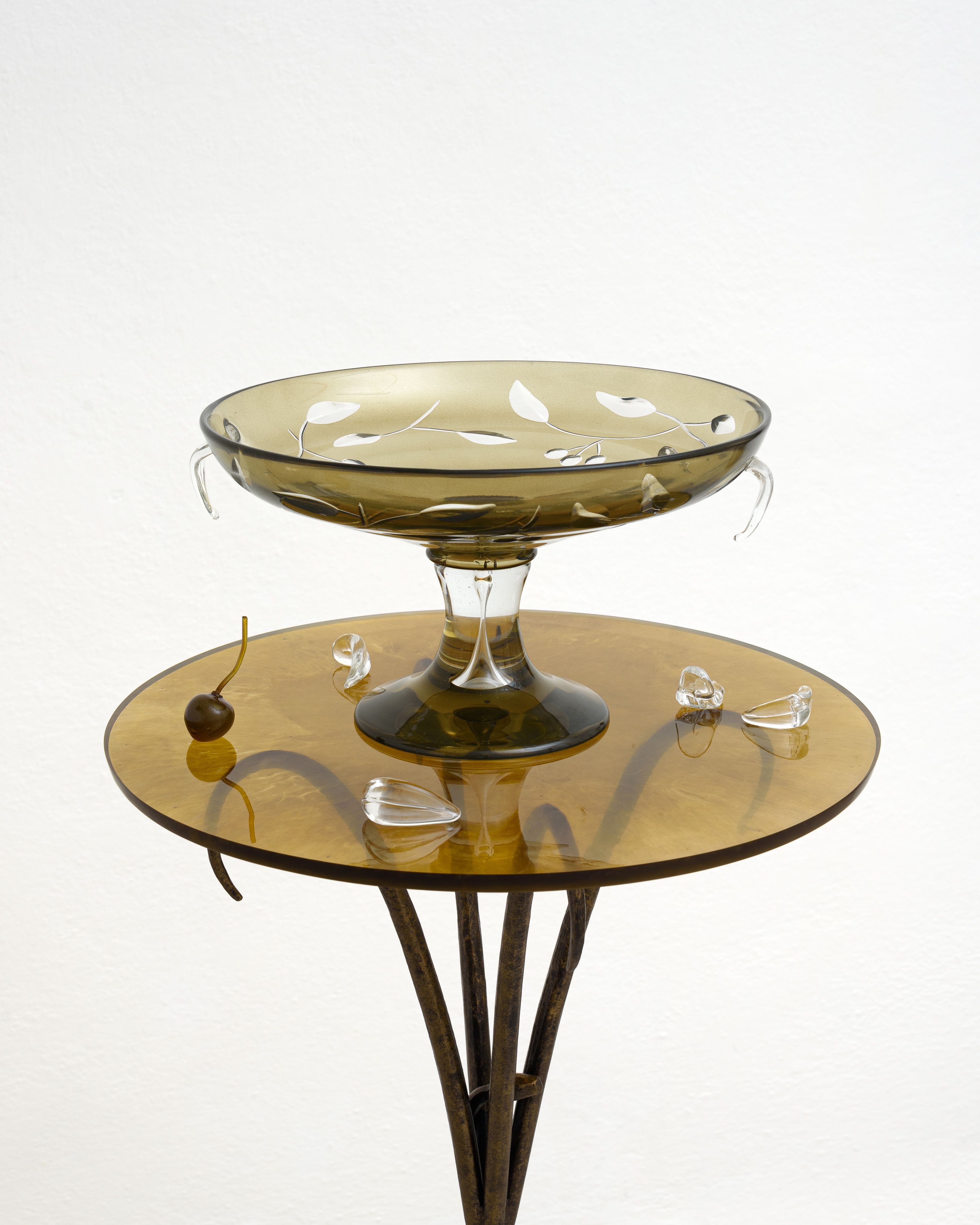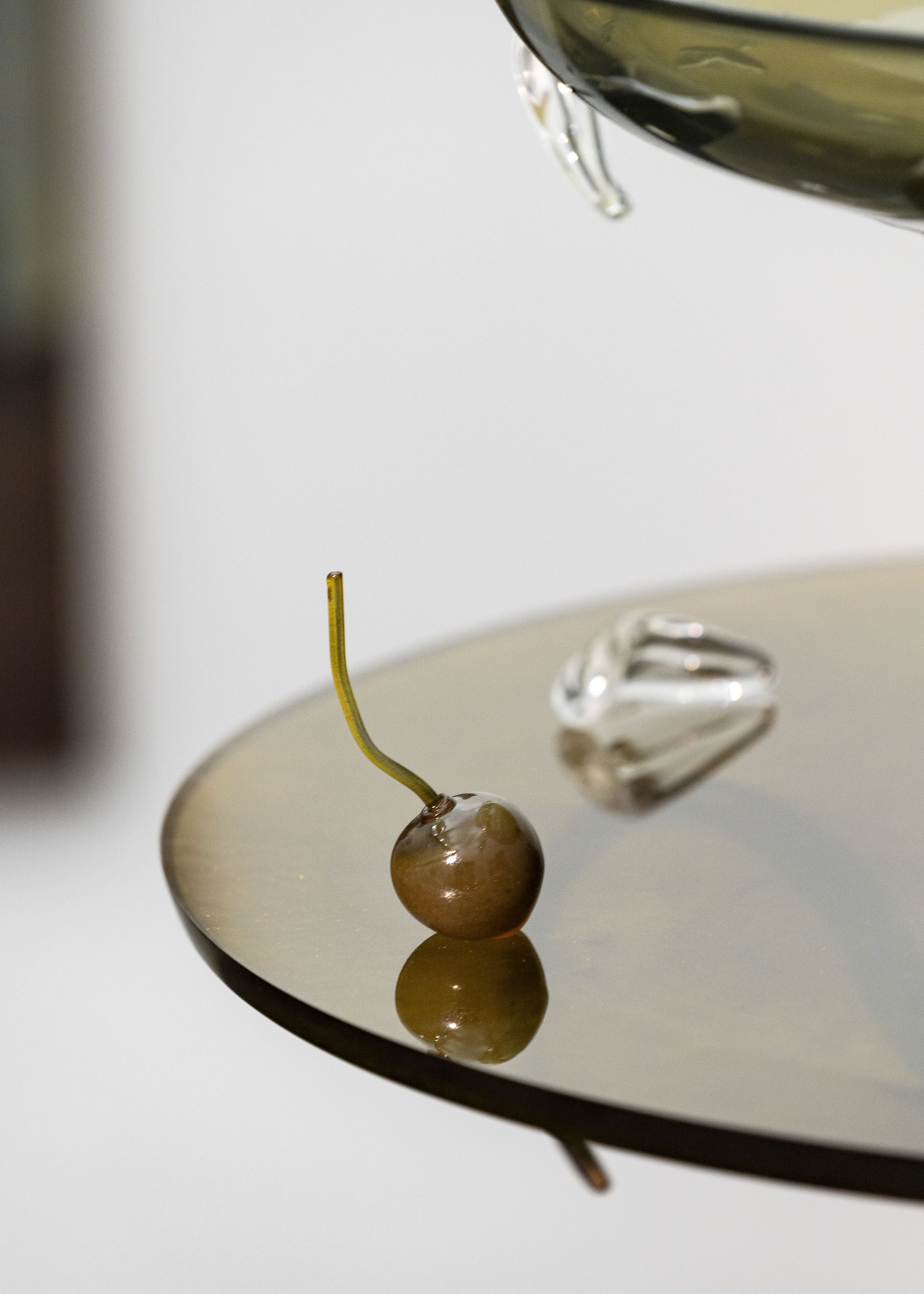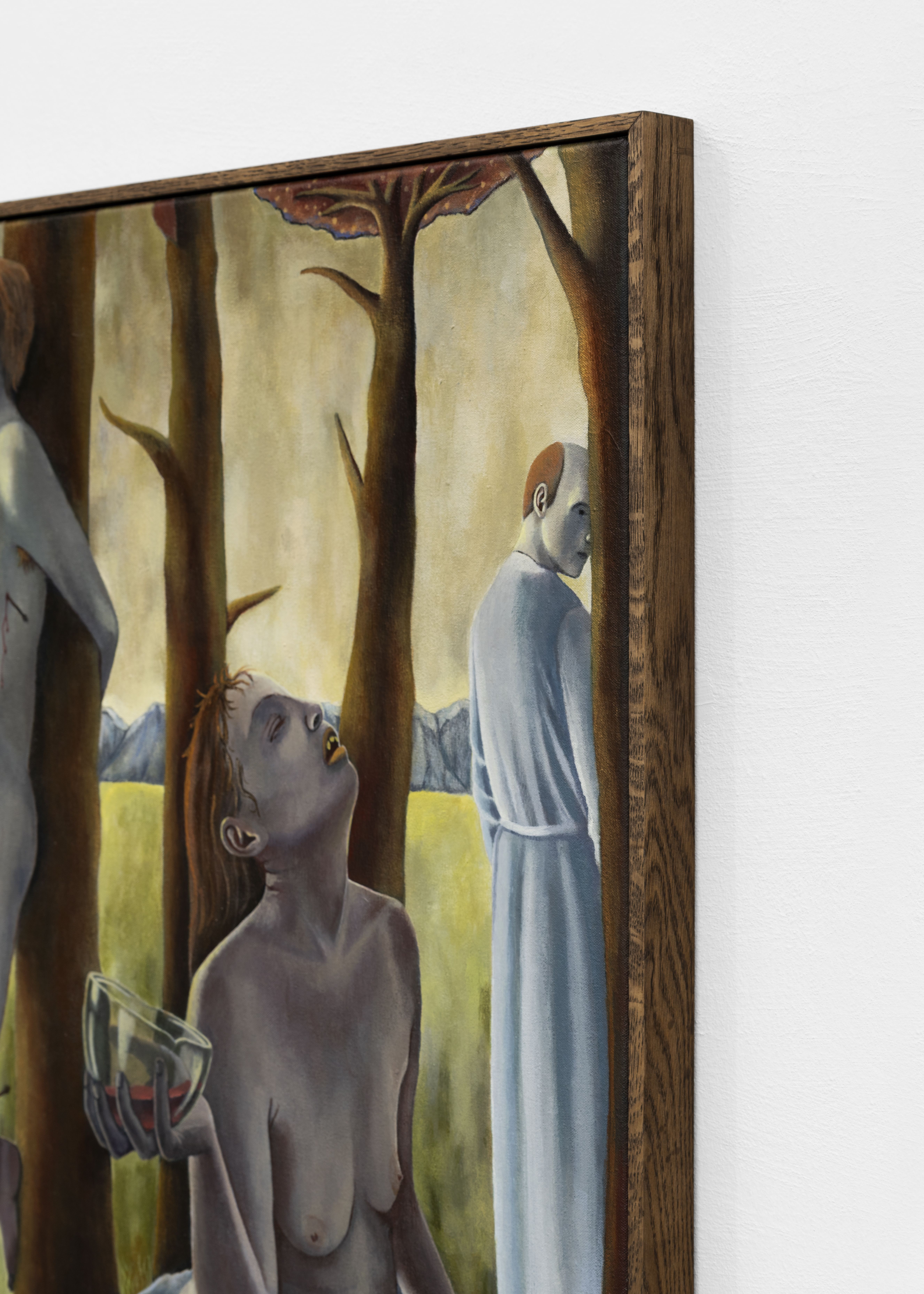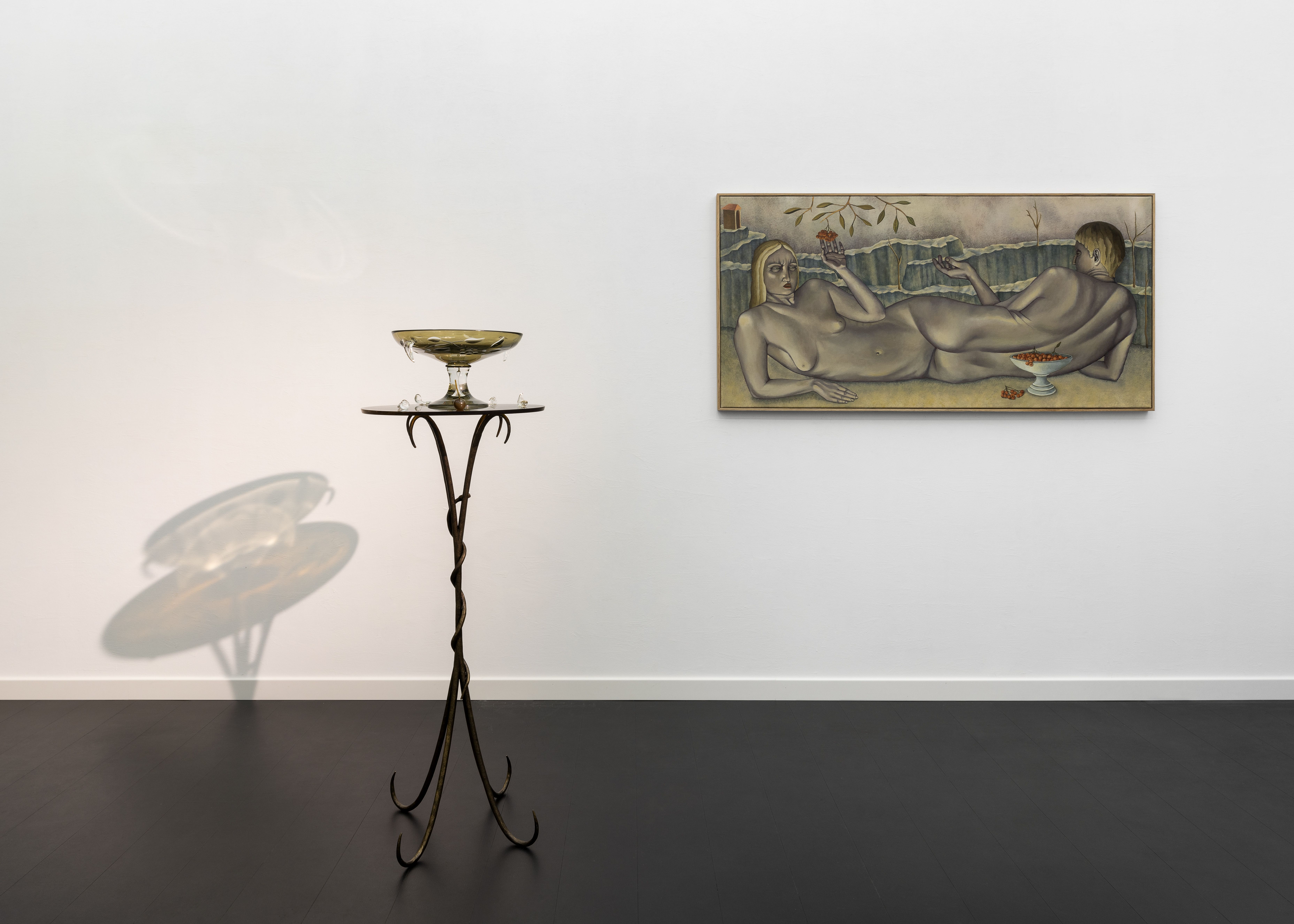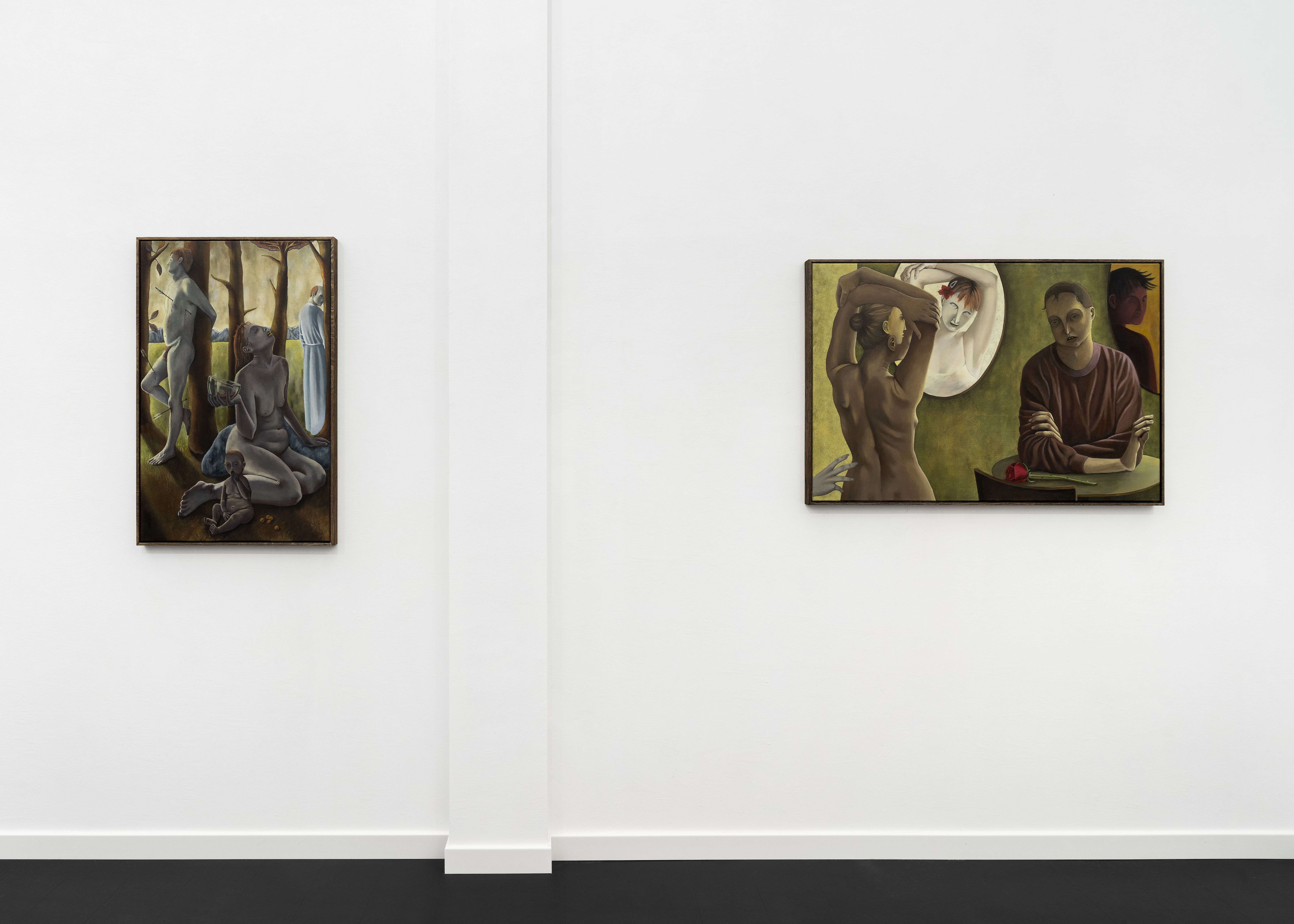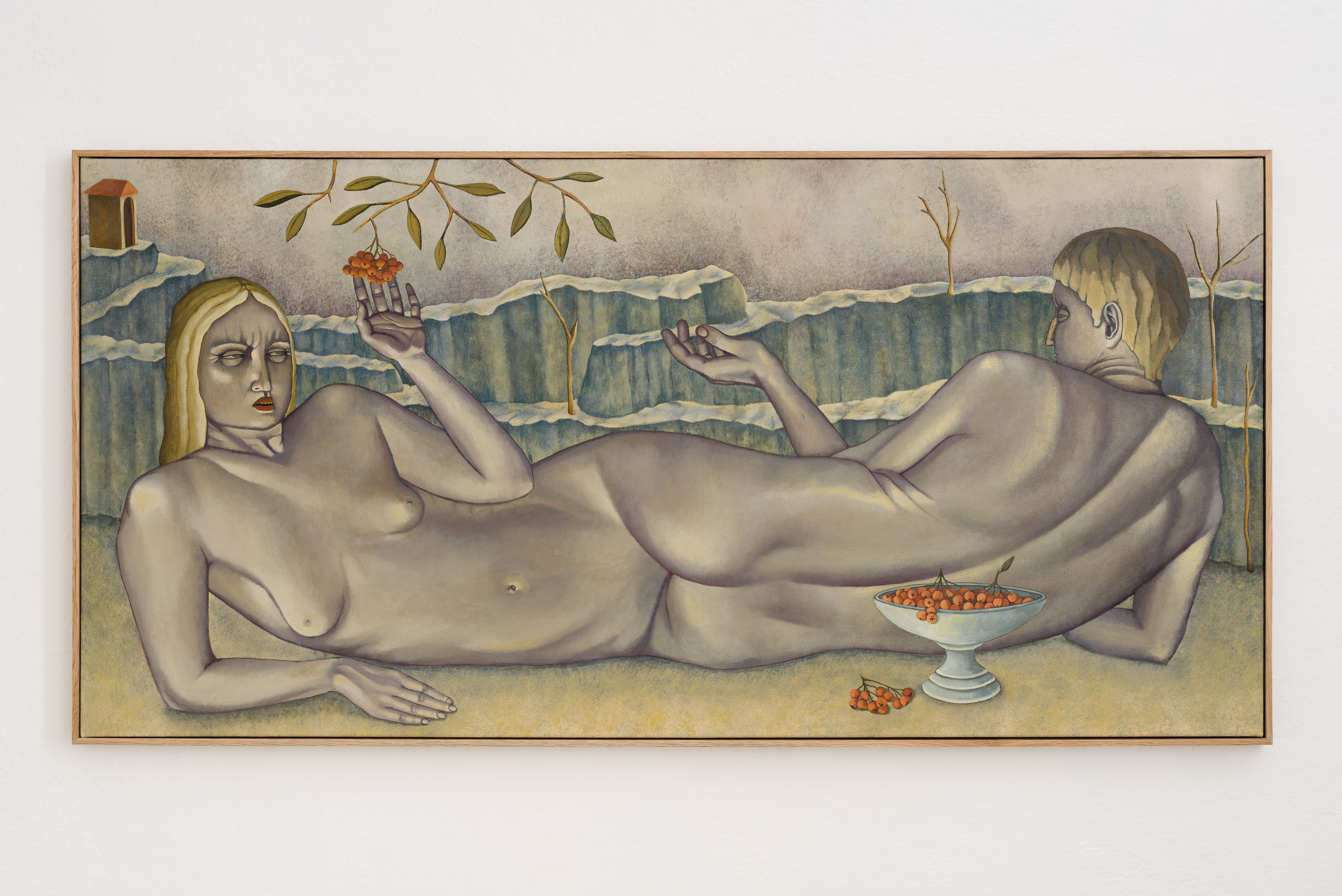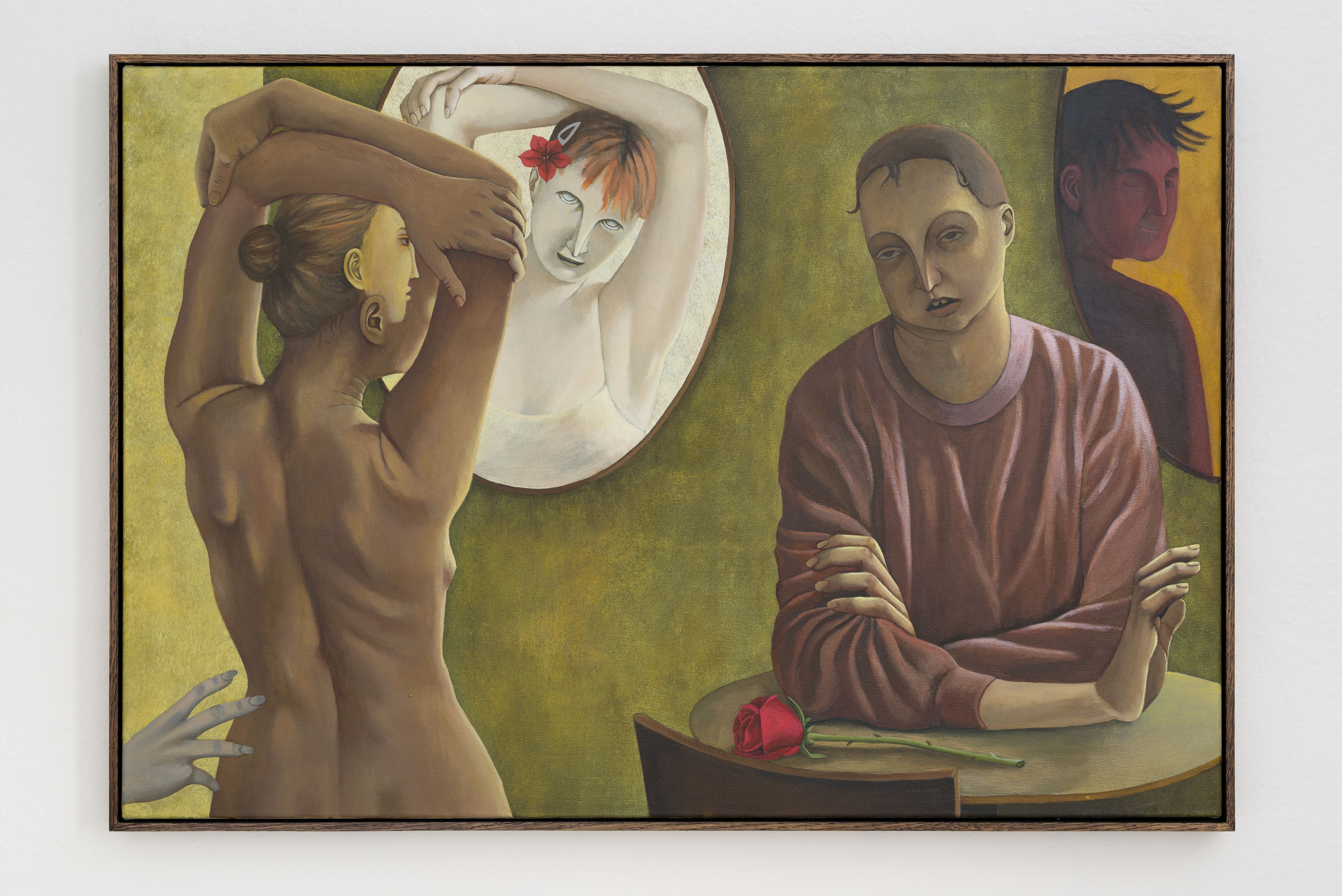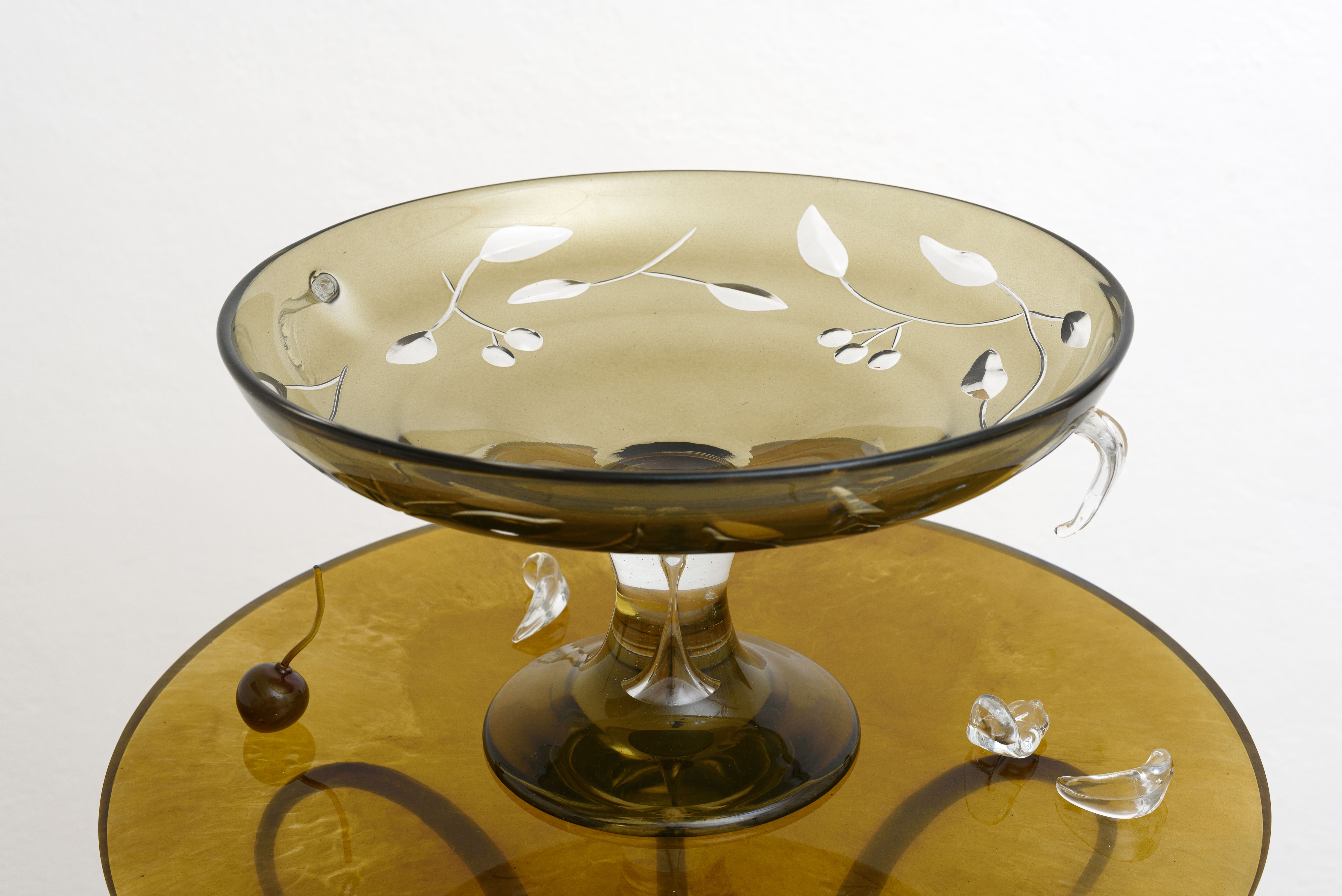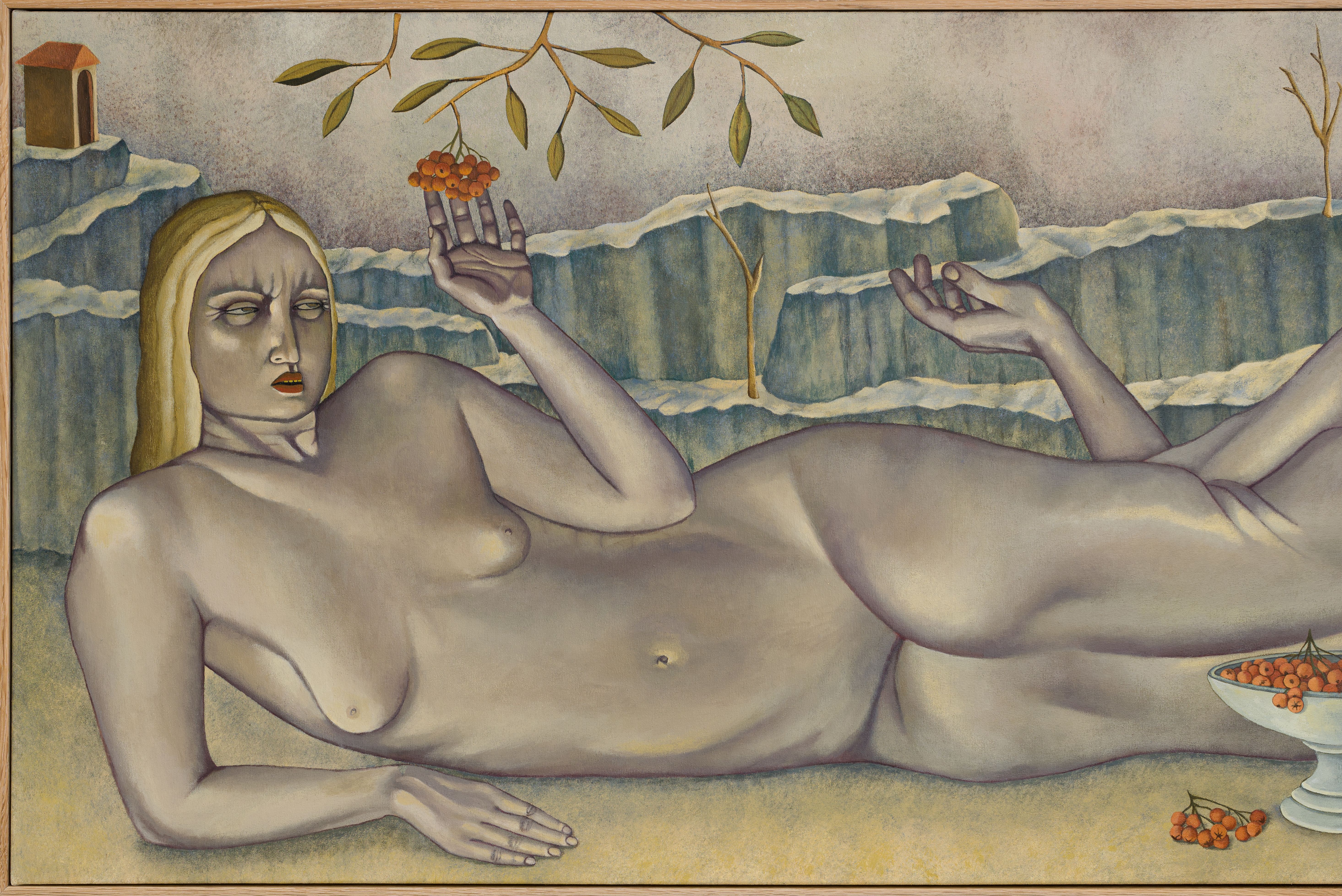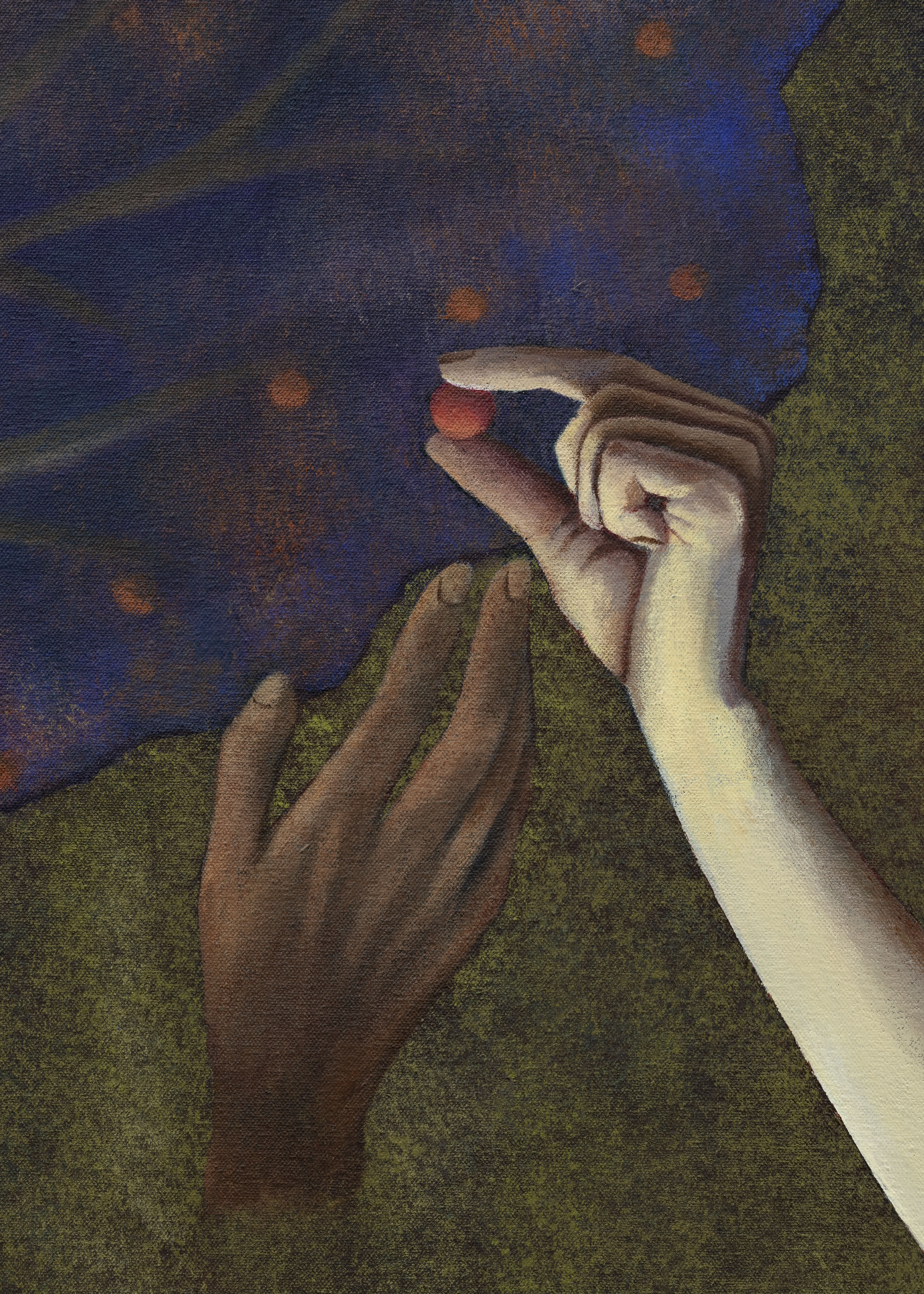Reap The Sown
eastcontemporary, Milan, IT, 2023
With text by Ivana Hrončeková
To examine and interpret the individual works of Dominika Dobiášová’s latest series requires untangling of a dense web of meaning, full of references to art history, historical events and the artist’s imagination. The basic guiding line of her work method continues to be intuition and an emphasis on the individual experience of personal and broader social movements. An evident leitmotif of her work is an exploration of unequal status and the roles that represent it.
In Harvest, Botticelli’s Venus merges with the biblical Eve. However, she is caught plucking the symbolic fruit from the tree in the Garden of Eden. The guilt resulting from this situation is perhaps driven more by tradition than by the character’s authentic experience. The metaphorical union of Adam and Eve into one body is also somewhat less harmonious in In The Thrall of Mutual. The seemingly equal proportions of both figures are disturbed by their oppositional posture and facial expressions. Here, Eve represents the traditional female role of the gatherer, while Adam, against her wishes, enjoys the results of her labor. He is the owner, deciding her will, but at the same time he is both disgusted and afraid of her. Another contradiction can be observed in the fruit the story centers around: the rowan berry. Its orange berry bears the sign of the pentagram, a symbol of protection, on its top. It can prevent the obscuring of meaning and deception through the use of witchcraft and magic, as well as alleviate menopausal and menstrual problems. A variation of the motif of the first sin and of the woman as a vessel can also be read in the object From Picking to Serving, which consists of a cut glass bowl decorated with cherry or rowan berries and the artist’s wrought-iron base wrapped in a braid in which a snake lurks.
Apart from biblical motifs, the mutual constellations of individual figures, which reveal their inner psychology are also evident in Dominika’s paintings. An important aspect of these relationships is also the fact that women are the main agents of the action, while men are mostly just absent-mindedly watching or demanding. Admission depicts a woman looking in the mirror with undisguised affection. It represents a whole register of ambivalence of internal contradiction arising from conflicting expectations. She is a personality with multiple faces that are difficult to read. A sexual servant with a will of her own, who has accepted her role even though she did not want to be in it in the first place. Now she is a commodity on the market, designed to perform and to be looked at. All the more hurtful is the lack of acceptance and interest from a man who is completely immune to her.
The imaginary narrative climax of the series is the painting Reap the Sown, where the figures of a man and a woman no longer compete with each other, but each individually wages their own struggle and in their own way they are both victims. It is also the key to grasping the motifs of the entire series, in which Dominika Dobiášová draws on the works of the thinker and feminist activist Silvia Federici. She describes a gradual process whereby the value of women has systematically diminished, primarily as a result of the enabling of wage labor on which the capitalist economy is based. Redefining Marx’s notion of primitive accumulation as the essence and not the precursor of capitalism, she draws attention to the devaluation of women’s unpaid work, whether it be motherhood or other activities related to keeping a household. To sustain itself, unpaid female labor needs to be constantly expropriated by capitalism. Institutionalized violence, prostitution and rape, witch-hunts, burning and torture have become the instruments of this subjugation. The figures of idle but supervising and consuming men can thus also be interpreted as the uncompromising inquisitorial hand of the contemporary economic system, claiming everything it can get its stoic hands on.


